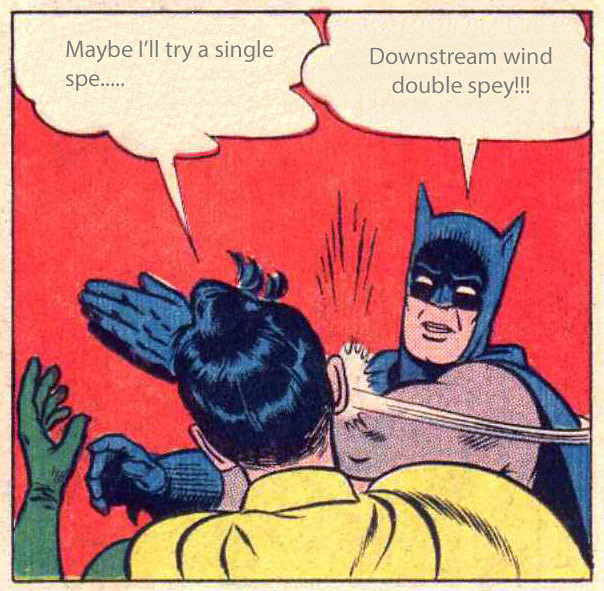ratherfish
Well-known member
what is the difference between Spey Casting and, well...just casting a fly rod?
what is the difference between Spey Casting and, well...just casting a fly rod?

Podcast?? - please do tell....There are also 3 kinds of spey casting, Traditional, Scandi, and Skagit
as explained by Steve Rajeff. I am not a spey caster but from listening to podcasts, Skagit is supposedly the easiest to learn.
Steve Rajeff discusses the 3 styles here:
Steve Rajeff
Scagit Casting
Tia with a 'good caster' it could be any of the three. Major difference is how you want to fish and the available free air space you have to work with.Most recent thread I found. That this might be appropriate. Trying to understand what spey casting is. From what threads I've looked at. Looks like long roll casting is idea. Or are other forms employed ? Oval type, constant pressure kind of things. When 100' casts are made. What cast is being spoken of ?
Tia....... pc
My first post in this thread (second post from the top) is how I summarise it. A hybrid of roll casting and overhead casting which enables a change of direction. The change of direction is the common theme.Most recent thread I found. That this might be appropriate. Trying to understand what spey casting is. From what threads I've looked at. Looks like long roll casting is idea. Or are other forms employed ? Oval type, constant pressure kind of things. When 100' casts are made. What cast is being spoken of ?
Tia....... pc
One picture is worth less than a vid.

Not sure but looks like me.
Here's a guy fishing, what you see is a 45' super Scandi line being followed by an orange vinyl coated shooting line that the angler has just released. On the front of the fly line is a 15' long leader with a fly on the tip. That cast is still climbing and it unfurled completely.
I couldn't resist, I don't have any other photos like that but when you are on truly large rivers you can cast a fly as far as your ability will allow. I find it a very relaxing way to fish.
Could be Fred. The similarity between you and Ard is almost uncanny.Not sure but looks like me.
fae
Poor Ard ... give the man a break!Could be Fred. The similarity between you and Ard is almost uncanny.
Lol. If I have to... I prefer the snake roll.
Touch and go casts generate higher line speeds so that is normally what is used. Eg: single spey, or snake roll.Most recent thread I found. That this might be appropriate. Trying to understand what spey casting is. From what threads I've looked at. Looks like long roll casting is idea. Or are other forms employed ? Oval type, constant pressure kind of things. When 100' casts are made. What cast is being spoken of ?
Tia....... pc
You should start your own thread. Your questions are specific and I am very sure you will get a lot of help from the forum.The cast I'm trying to go for is a Snap T.
Since the last, I have switched from a 400 grain OPST Commando head (16.5') to a 23' RIO 550 grain Skagit Max head. I've found that with a 13' rod, it's easier to maintain an anchor with a longer head.
I also have been trying to pause, allowing the D loop to align with the direction of travel. It seems that the rod seems to unload at the height of the sweep, only to reload when it moves forward. Is this correct?
The last thing that I have been working on has been a tighter sweep and forward cast, keeping my arms inside the phone booth. I had a problem using my right hand to power the forward cast, and I've tried to correct that by using my left hand to rotate the rod around my right hand, instead of vice versa.
